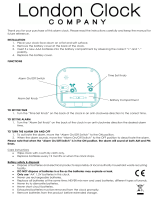
5
GB
Precautions
Discs that this unit CAN play
Audio CD
CD-R/CD-RW (CD-DA*/MP3/WMA files)
* CD-DA is the abbreviation for Compact Disc
Digital Audio. It is a recording standard used for
Audio CDs.
Discs that this unit CANNOT play
CD-R/CD-RW other than those recorded in
music CD format or MP3/WMA format
conforming to ISO9660 Level 1/Level 2 or Joliet
CD-R/CD-RW of poor recording quality, CD-R/
CD-RW that has scratches or are dirty, or CD-R/
CD-RW recorded with an incompatible
recording device
CD-R/CD-RW which is finalized incorrectly
Notes on discs
Before playing, clean the CD with a cleaning
cloth. Wipe the CD from the center out. If there
is a scratch, dirt or fingerprints on the CD, it may
cause tracking error.
Do not use solvents such as benzine, thinner,
commercially available cleaners or anti-static
sprays intended for vinyl LPs.
Do not expose a CD to direct sunlight or heat
sources, such as hot air ducts, or leave in a car
parked in direct sunlight, as there can be a
considerable rise in temperature inside the car.
Do not stick paper or stickers on the CD, or
scratch the surface of the CD.
After playing a CD, store it in its case.
On safety
As the laser beam used in the CD player section
is harmful to the eyes, do not attempt to
disassemble the casing. Refer servicing to
qualified personnel only.
Should any solid object or liquid fall into the
unit, unplug the unit, and have it checked by
qualified personnel before operating it any
further.
Discs with non-standard shapes (e.g., heart,
square, star) cannot be played on this unit.
Attempting to do so may damage the unit. Do
not use such discs.
On power sources
For AC operation, use the supplied AC power
cord; do not use any other type.
Unplug the unit from the wall outlet if it is not to
be used for an extended period of time.
When the batteries are not to be used, remove
them to avoid damage that can be caused by
battery leakage or corrosion.
On placement
Do not leave the unit in a location near heat
sources, in a place subject to direct sunlight,
excessive dust or mechanical shock, or in a car
subject to the direct rays of the sun.
Do not place the unit on an inclined or unstable
surface.
Do not place anything within 10 mm of the side
of the cabinet. The ventilation holes must be
unobstructed for the unit to operate properly
and prolong the life of its components.
Since a strong magnet is used for the speakers,
keep personal credit cards using magnetic coding
or spring-wound watches away from the unit to
prevent possible damage from the magnet.
On operation
If the unit is brought directly from a cold to a warm
location, or is placed in a very damp room,
moisture may condense on the lens inside the CD
player section. Should this occur, the unit will not
operate properly. In this case, remove the CD and
wait about an hour for the moisture to evaporate.
Cleaning the cabinet
Clean the cabinet, panel and controls with a soft
cloth slightly moistened with a mild detergent
solution. Do not use any type of abrasive pad,
scouring powder, or solvent, such as alcohol or
benzine.
Handling an SD card
Do not knock, bend, or drop an SD card.
Do not disassemble or remodel an SD card.
Do not allow an SD card to get wet.
(Continued)






















